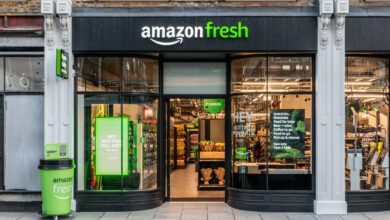A retailer’s guide to online marketplaces: Expanding your reach
Online marketplaces are a source of huge potential for a retailer. Here is how to boost your reach

Register to get 1 free article
Reveal the article below by registering for our email newsletter.
Want unlimited access? View Plans
Already have an account? Sign in
In today’s rapidly evolving retail landscape, adapting to the digital realm is not merely a choice but a necessity for survival. Expanding reach in online marketplaces emerges as a pivotal strategy. These platforms, with their vast global audience, offer unprecedented opportunities for growth that traditional brick-and-mortar stores struggle to match. Here’s a comprehensive guide for retailers aiming to bolster their presence in online marketplaces.
Before taking the plunge into the online marketplace ecosystem, conducting extensive market research is paramount. Identifying platforms that align best with your target audience and product offerings is the first crucial step. Consider stalwarts like Amazon, eBay, Etsy, or explore specialised niche marketplaces. Each platform boasts unique demographics and requirements; a discerning choice here is foundational.
An optimised product listing serves as the linchpin for visibility and conversions. It’s imperative to invest in high-quality images, articulate product titles, and comprehensive descriptions infused with relevant keywords. Incorporating customer reviews and ratings further builds trust with potential buyers.
Staying competitive necessitates vigilant monitoring of prices within the marketplace and adjusting yours accordingly. Tools like automated repricing software can be invaluable, ensuring a balanced equilibrium between competitiveness and profitability.
A customer-centric approach is non-negotiable. Providing exemplary customer service entails swift responses to inquiries and the adept handling of customer concerns with a blend of empathy and efficiency. Positive interactions can snowball into repeat business and glowing reviews, fortifying your reputation on the platform.
Consider availing yourself of marketplace-specific fulfilment services. Amazon’s Fulfilled by Amazon (FBA) or eBay’s Global Shipping Program can streamline your shipping processes, elevating customer satisfaction and streamlining operations.
Investing in paid advertising and cross-promotion features within the marketplace is a judicious move. Sponsored listings, pay-per-click campaigns, and seamless social media integration serve as potent tools for increasing visibility among potential customers.
Maintaining accurate inventory levels is paramount to avoid over-selling and disappointing customers. Leveraging inventory management software ensures seamless synchronisation of stock levels across all platforms.
Applying Search Engine Optimization (SEO) techniques is crucial for enhancing the visibility of your product listings within the marketplace. The judicious use of relevant keywords, accompanied by high-quality images and detailed descriptions, can significantly boost discoverability.
Regularly scrutinise performance metrics provided by the marketplace. Metrics such as conversion rates, click-through rates, and customer behaviour offer invaluable insights for data-driven decision-making.
Establish a strong brand presence on the marketplace. Consistency in logos, colours, and messaging across your listings not only fosters brand recognition but also builds trust among customers.
Staying compliant with the marketplace’s policies, guidelines, and best practices is fundamental. Adherence to these regulations not only ensures a positive reputation but also safeguards against penalties or account suspensions.
Encourage customers to leave reviews and feedback. This user-generated content serves a dual purpose – it aids in refining your products and services and fosters trust with potential buyers.







